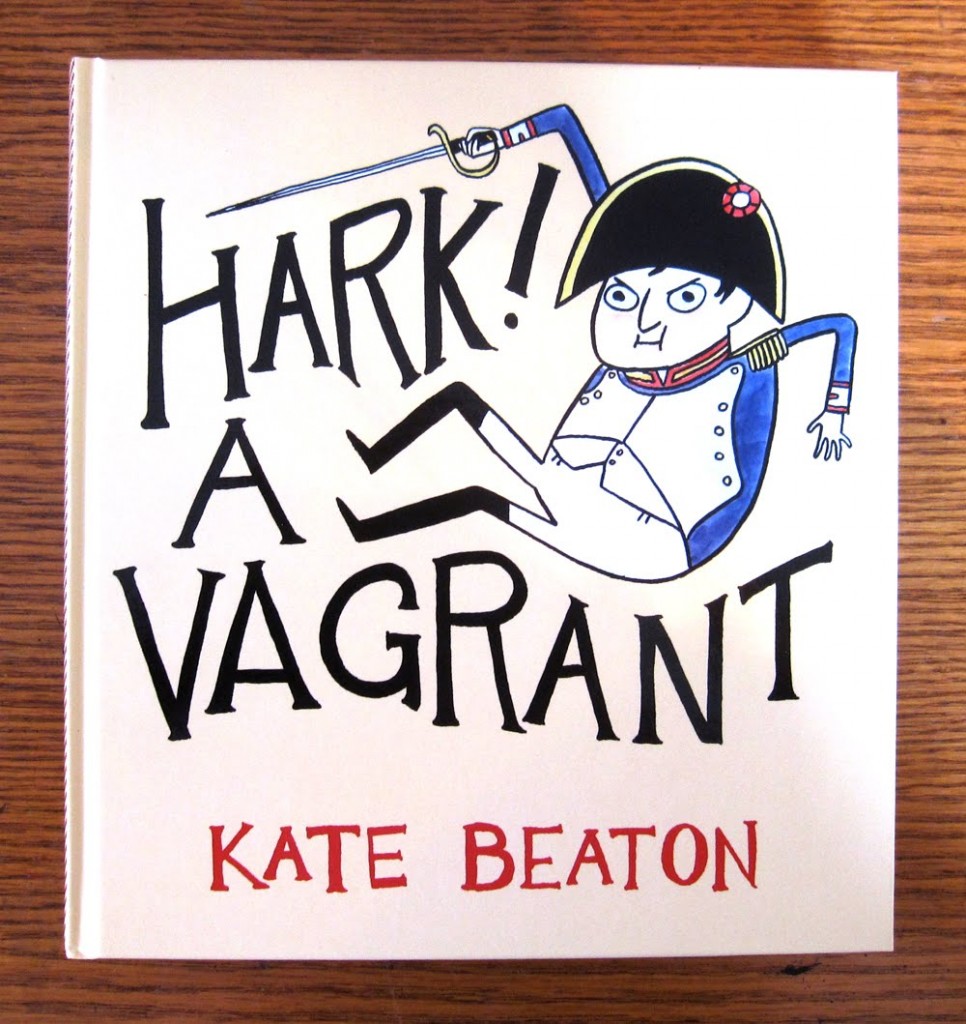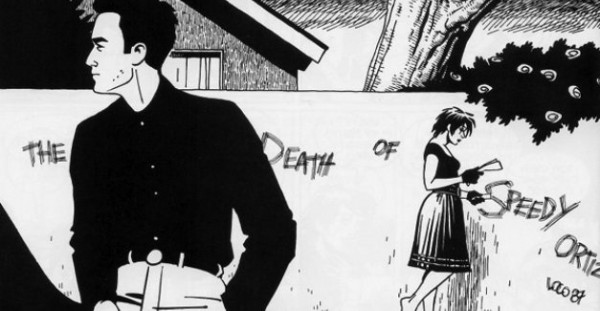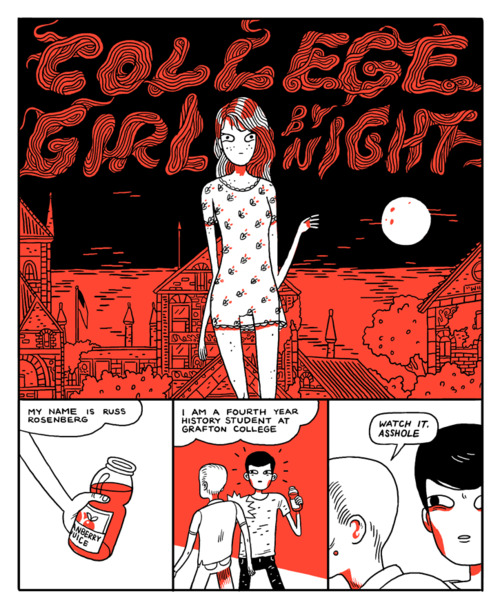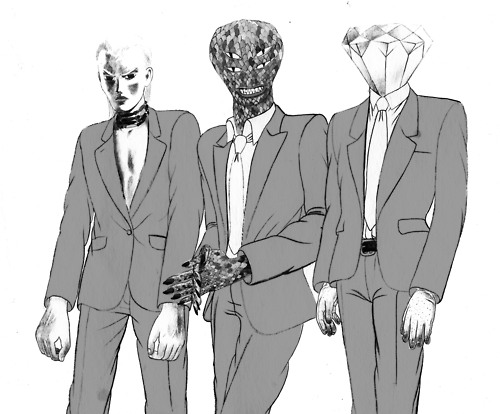* The 2011 edition of San Diego’s Comic-Con International began last night with its traditional Wednesday Preview Night. Actually, it seemed to being on Monday, as publishers began rolling out their SDCC announcements early. Here are a few of the neater ones thus far.
* Bryan Lee O’Malley’s next project, Seconds, will be released by Villard in 2013. That’s all I got. That’s all anyone’s got about it, at the moment.
* After literally years of saying that publishing original graphic novels without serializing the content first doesn’t make financial sense for them, Marvel is doing exactly that with their new Season One line of standalone graphic novels retelling the origins of some of their major characters. I think there’s two interesting things to be said here. The first is that while Marvel’s no doubt going to get a lot of grief for “ripping off” DC’s similarly named Earth One line (or “line” — we’ve seen neither hide nor hair of Geoff Johns and Gary Frank’s Batman book since it was first announced), Earth One is actually more similar in terms of content to Marvel’s existing Ultimate line, in that it’s taking the characters and basic concepts and restarting them from scratch with all-new continuity. Season One, by contrast, is just an origin retelling of the sort Marvel’s done many times in floppy funnybook form. The second thing is that the talent involved isn’t superstars, but people who seem to me to be roughly on the level that the folks who launched the Ultimate line back in the day were at. That’s undoubtedly a cost-saving measure, but maybe, as with the Ultimate line, it’ll provide a chance to establish some new voices on a project tangential to the success of the mainstream Marvel Universe.
* In other news…
* Hooray, Tom Spurgeon is back at The Comics Reporter! Man, did I miss him. He starts things off with a bang, too: A lovely essay on Jaime Hernandez’s lovely “The Death of Speedy Ortiz.” I like his point about how young people can incorporate tragedy into their self-mythologies in a way that’s both helpful and deceitful; I certainly did.
* Spurge also offers a provocative essay arguing that yes indeed, it’s time for the Xeric Grants to go. I don’t think I agree with his analysis at all. I think breakout success in the webcomics field of the sort Tom says is now possible in a fashion akin to what the Xeric does for its winners is, for the most part, only possible within a relatively narrow range of artistic expression. (I also think Kickstarter success is only possible within a relatively narrow range of audience appeal, but Kickstarter’s not really something Tom’s talking about.). I think that if arthouse publishers like Koyama, PictureBox, Secret Acres, AdHouse, Pigeon Press et al were really sufficient to cover worthwhile young/new cartoonists, then someone ought to have told recent winners like Blaise Larmee, Lane Milburn, and Dave Kiersh (Dave Kiersh!), who all seem to me to be eminently publishable by such outfits but who turned to the Xeric anyway. And I don’t really see a problem with the Xeric moving away from its old-school conception of self-publishing as an end in itself; none of the aspects of the new-model Xeric — an honorific people take seriously in a world where Brad Meltzer’s Justice League wins Eisners, a chance for cartoonists to be handed some money and some printed comics, a foot in the door with small-press publishers — seem any less noble or delightful to me.
* By contrast, Geoff Grogan pens the most eloquent eulogy for the Xeric grant I’ve yet read, tackling not just the “what this person, place, or thing that doesn’t exist anymore meant to me” business that’s as far as most of us comics people ever go in these things, but arguing persuasively that the loss of the Xeric is the loss of an opportunity for cartoonists (or comics-makers, as Geoff might prefer) to experiment, in print. Both these elements are key. He also notes that the Xeric Foundation provided him with legal help when his excellent book Look Out!! Monsters ran into some trouble, which a ComicPress site and Kickstarter page are never going to provide anyone. Read it.
* Grant Morrison takes nerd culture to the woodshed. If you’ve ever wondered why a forward-thinking guy like Morrison has never managed to maintain a web presence, I think you now have your answer.
* Good riddance to the Ron Howard Dark Tower adaptation project, for now at least. Those books stink.
* The cartoonist Jason reviews John Carpenter’s The Thing. Ain’t the internet grand? My favorite thing about this is how he points out that as a Norwegian, he can understand every word the crazy Norwegian is shouting before the Americans kill him, making the whole movie that much more fatalistic.
* Curt Purcell didn’t care for Death Note overall, having realized that by the end he was reading more out of the residual goodwill engendered by the concept and the first few volumes than for interest in the increasingly byzantine doings of the killers, detectives, notebooks, and shinigami involved. That’s a fair read, although I recall enjoying myself right through the end.
* Matt Zoller Seitz and his ninth-grader daughter talk Harry Potter, the books and the movies, at length. I guess now’s the part where I say that the books convey the helplessness of children at the hands of adults really really well but are otherwise kind of a mess, the ending’s a convoluted punch-pulling trainwreck that gives way to a mawkishly sentimental and unimaginative epilogue, and I’ve had zero interest in seeing any of the movies since the first one. Every Potter needs a pooper!
* Man, Duel was a good movie. I probably haven’t seen it in a dozen years.
* Michael DeForge’s “College Girl by Night,” his contribution to the second volume of the alt-smut anthology Thickness, looks like potentially pretty hot stuff.
* Cool, creepy art from Jonny Negron.
* Cool, creepy art from Renee French.
Tags: Carnival of souls, comics, horror, links, movies





